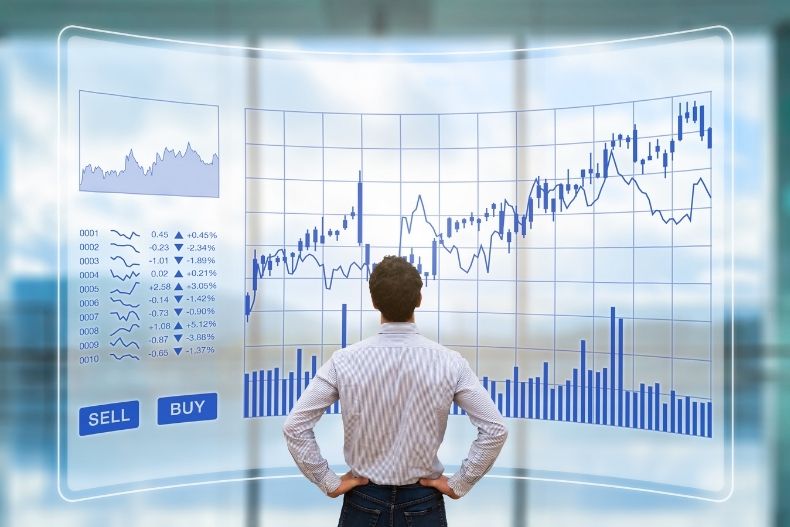Over the last few decades, Malaysia has gone through major improvements and rapid economic growth. This gave a prospering environment for traders as well. Forex Malaysia has seen a rise in interest due to a combination of improved living standards and increased wealth.
However, it’s all too easy to learn lessons the hard way and have an unsuccessful introduction to this market. After all, Forex trading in Malaysia is still a relatively new concept. Keep reading to learn the basics of how everything works in general, as well as what you should know about the Malaysian market in particular.

Components of a Forex Trade
Below are several concepts that play a part in every Forex trade and that you need to understand.
Currency Pairs
A Forex asset is always a set of two currencies, one of which is bought and one of which is sold simultaneously. The first currency is called the base currency, the second one – the quote currency.
For example, in the EUR/USD pair, euro is exchanged for U.S. dollars. The pair indicates how many dollars are needed to purchase one euro.
Forex Quotes
A forex quote consists of a bid and an ask: EUR/USD = 1.2200/1.2205.
Bid refers to the highest price that a buyer is willing to pay and ask – the lowest price that a seller is willing to sell for. If you’re interested in buying EUR, you’ll pay the ask – the broker’s asking price – which is 3.3605.
Forex Lots
A lot refers to a batch of currency the trader controls, and there are three typical designations:
- Micro lot – 1,000 units of your account funding currency. If you buy one micro lot of the EUR/USD, you’re entering a trade worth 1,000 euro. In most cases, this is the smallest trade you can place, although some also offer nano lots.
- Mini lot – 10,000 units.
- Standard lot – 100,000 units.
Leverage
Leveraged trading involves borrowing money to increase your trade size from a broker. While you deposit a smaller amount, the potential profit or loss is based on the full value of the trade, including the borrowed amount. For example, with a 100:1 leverage, you will be controlling $100,000 with $1,000.
Long vs. Short
Going long refers to buying the asset when the trader expects the base currency to rise against the quote currency. With this trade, the profit potential isn’t limited because the asset can rise indefinitely.
Going short refers to selling the asset when the trader expects the base currency to decline against the quote currency. Here, the profit is limited to the amount you initially received on the sale.
What Is the Trading Landscape in Malaysia?
There are more people getting involved in the market. The reason may be that the pandemic has taught us the value of an additional source of income.
In Forex, the better the country is doing, the higher the value of that country’s currency. So, when Malaysia’s palm oil is in high demand, there are more people buying Malaysian Ringgit to purchase the goods. Subsequently, the currency rises.
Even if people don’t want to experiment with local currencies, there are plenty of opportunities in trading major currency pairs. In any case, the number of first-time traders is higher than before. This applies not only to Malaysia and Forex but across all financial markets.
Regulation and Other Legal Matters
The buying and selling of foreign currency in Malaysia became legal only in 2012. But the activity is only allowed to be processed by licensed commercial banks, Islamic banks, investment banks, and international Islamic banks.
There are other pieces of legislation that have an impact on trading activity:
- The Exchange Control Act Of 1953 covered restrictions on foreign exchange for residents and non-residents. In short, there are no restrictions for purchasing ringgit assets and all profits from it.
- The Securities Commission Act Of 1993 made the Securities Commission Malaysia responsible for licensing and regulation of businesses.
- The Money Changing Act Of 1998 permitted the trade of foreign currency (buy and sell).
How to Start Forex Trading in Malaysia
On your path to becoming a pro trader, follow these steps:
- Choose the right broker. Different brokers can cater to different needs, so make sure you understand what type of trader you are and your goals of trading. Choose a broker that aligns with your needs. I should also be the one that offers your preferred methods of depositing and withdrawing funds.
- Create a trading account. Start with a demo account to test the trading style you’re going to implement.
- Develop a risk management strategy. This includes planning your trades, not putting more than 1% of your capital into one position, setting Stop Loss and Take Profit, and diversifying your assets.
- Learn analysis tools. Study the core concepts of technical and fundamental analysis to identify trading opportunities. Also, start building your technical indicator toolbox – Moving Average, Stochastics, MACD, etc.
- Start making trades and turn theory to practice!
There used to be complications for trading in Malaysia, but things have evolved since then. Do consider Forex if you are interested in branching out and exploring new markets and opportunities.











